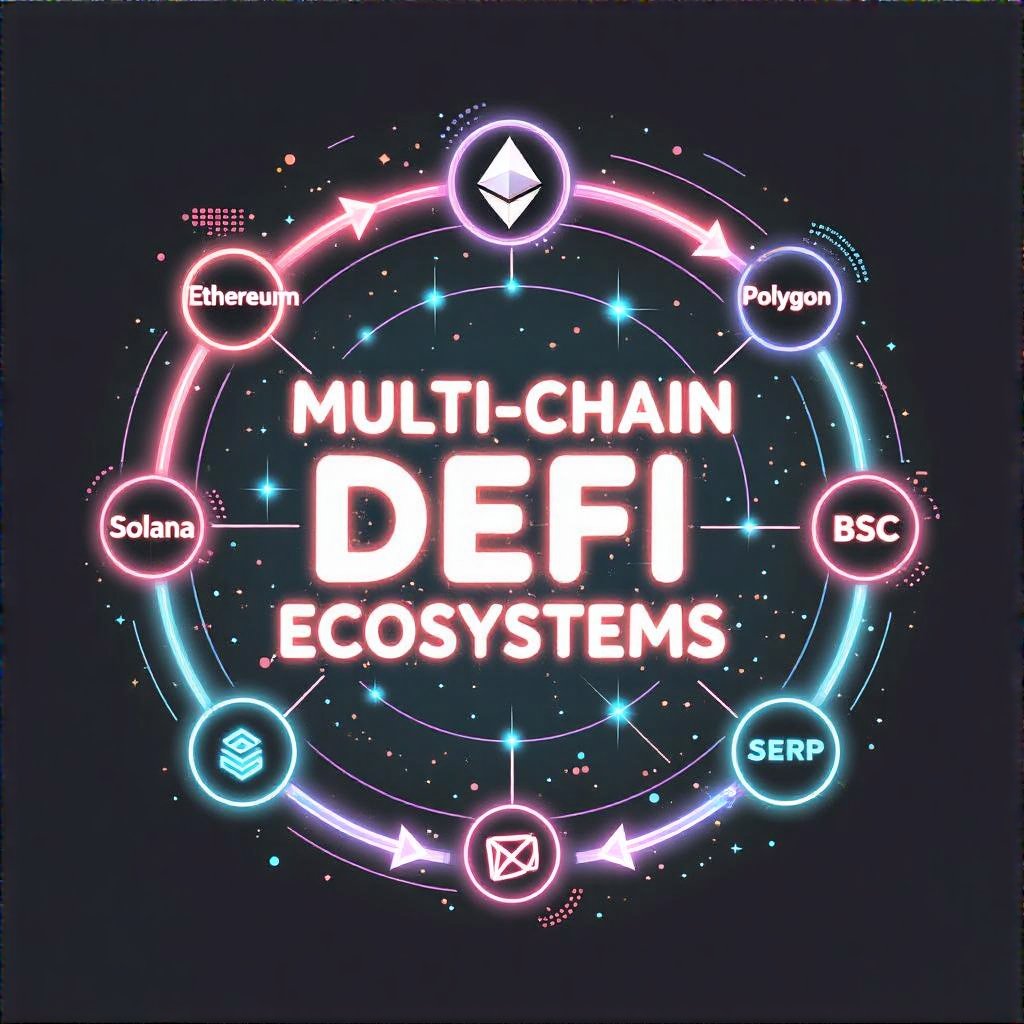The Strategy Behind Multi-Chain DeFi Ecosystems

In a fast-moving DeFi landscape, multi-chain strategies maximize liquidity, reach, and resilience. This guide expands on the core approach, weaving in real-time signals and practical design patterns for robust cross-chain experiences.
- Why Multi-Chain Matters in DeFi
- Key Benefits of a Multi-Chain Strategy
- Designing for Interoperability and Security
- Operational Playbook: Best Practices
- Risks and Mitigation
- Case Studies and Real-World Examples
- FAQ
Why Multi-Chain Matters in DeFi
Liquidity is no longer linear. Fragmentation across networks creates bottlenecks, slippage, and user fatigue. A deliberate multi-chain approach unlocks new liquidity streams, improves UX, and aligns incentives across ecosystems. As CoinDesk notes, deploying across chains reduces bottlenecks and widens access by routing demand to the most suitable network. For a deeper look at deflationary token models, we can see how supply dynamics can stimulate participation across communities. When bridging across networks, it helps to study patterns like those described in gravity-bridge security and staking to understand safeguards in practice.
Key Benefits of a Multi-Chain Strategy
Wider Reach and User Accessibility
By spreading assets and services across Ethereum, Solana, Polygon, and others, DeFi projects tap diverse user bases. The result is broader adoption, better user retention, and richer liquidity corridors. For a practical cross-chain angle, see Livepeer Arbitrum integration benefits.
Reduced Gas Fees and Enhanced Performance
Routing transactions through cheaper networks can dramatically lower costs and reduce wait times, preserving a smooth user experience during peak periods. This is a core driver for users who compare multi-chain options side-by-side.
Risk Diversification and Resilience
Holding assets and executing strategies on multiple chains mitigates single-point failures. It also enables parallel experimentation—new features on one chain need not disrupt the entire product. For concrete cross-chain incentives, consider the broader discussion of token models that balance supply and demand across networks, as noted earlier.

Designing for Interoperability and Security
Interoperability is not an afterthought; it defines reliability. Each bridge, relayer, or wrapped asset expands the attack surface, so thoughtful architecture matters. A disciplined security posture—audits, formal verification, and incident playbooks—keeps users confident as ecosystems scale.
Security Fragmentation
With assets and smart contracts scattered across chains, risk grows. A modular design with clear ownership boundaries, standardized vaults, and centralized monitoring helps contain threats. For real-world guardrails, consult the Gravity Bridge validators and staking guide to understand guardrails around cross-chain security and rewards.
Interoperability Concerns
Bridges, relays, and wrapped tokens introduce potential failure points. Robust testing, fallback paths, and governance controls are essential. As Reuters highlights, solving interoperability challenges is critical to enabling seamless multi-chain operations.
Operational and Developmental Overhead
Supporting multiple chains means parallel upgrade paths, diverse tooling, and ongoing risk management. Teams should plan for governance alignment, cross-chain monitoring, and clear deprecation strategies to avoid fragmentation over time.

Operational Playbook: Best Practices
A practical playbook blends security, UX, and governance. Start with a security-first mindset, then layer on cross-chain features with a clear user-facing narrative. The table below captures essential tradeoffs and how to balance them.
| Aspect | Single-Chain | Multi-Chain | Why it matters |
|---|---|---|---|
| Security posture | Isolated per chain | Unified risk monitoring with bridges | Consolidates defense and visibility |
| Interoperability readiness | Low | Bridges, adapters, relayers | Enables cross-chain flows |
| User experience | Consistent within one chain | Chain-aware yet unified UX | Improves adoption and trust |
Implement permissioning, upgrade governance slowly, and publish transparent status dashboards. For teams exploring deeper bridge strategies, the Gravity Bridge guide provides actionable security heuristics that help prevent common exploits while optimizing staking rewards.
Risks and Mitigation
Cross-chain deployments introduce timing risks, liquidity fragmentation, and governance tensions. Regular audits, bug bounties, and real-time monitoring reduce exposure. Build with a clear rollback plan and communicate system status to users to maintain trust during incidents.
Case Studies and Real-World Examples
Real-world deployments show how organizations balance speed, cost, and safety across networks. For a broader view of network use cases, see Polygon's blockchain use cases and how they expand DeFi, gaming, and marketplaces across layer-2 solutions. Polygon's use cases illustrate scalable cross-chain UX in action.

FAQ
Q1: How do I decide which chains to include?
A thoughtful approach weighs liquidity, user base, network fees, and security governance. Start with a core set of chains that complement each other and expand when a measurable uplift in user engagement or throughput is demonstrated.
Q2: What about security risk across bridges?
Bridge security requires audits, formal verifications, incident drills, and a robust monitoring layer. Always assume imperfect bridges and plan redundancies, fail-safes, and clear ownership paths for incident response.
Q3: How can I measure success?
Track cross-chain activity, time-to-finality per transaction, user retention across chains, and liquidity depth by pool health. A consolidated dashboard with these metrics helps reveal when a multi-chain design delivers real value.
